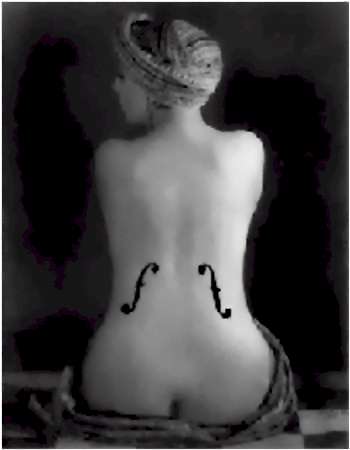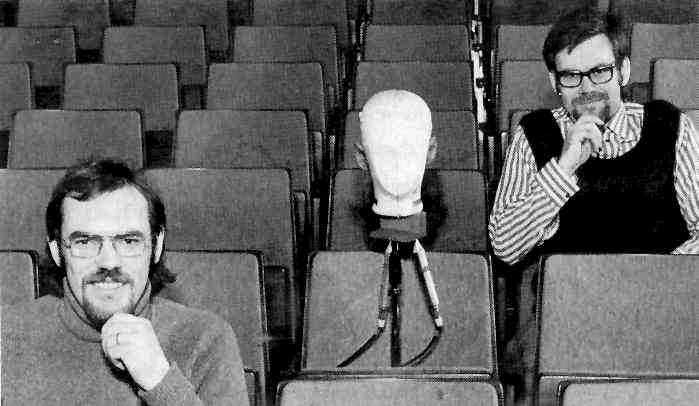Finally Seeking Novelty
Dementia "Affects Musical Taste"There's nothing remarkable about it. - Johann Sebastian Bach After silence, that which comes nearest to expressing the inexpressible is music. - Aldous Huxley People who suffer from dementia may suddenly find that they develop new and unexpected tastes in music, researchers have found.
In one example, a 68-year-old lawyer became progressively more apathetic, indifferent to his work, lost his inhibitions, and developed problems with speaking and abstract thinking. About two years after his diagnosis, he began to listen at full volume to a popular Italian pop music band, "883". Formerly a classical music listener, he had once referred to pop music as "mere noise". As his command of language and his emotional attachments to friends and family deteriorated, he continued to listen to the band at full volume for many hours a day. In another example, a 73-year-old women developed apathy and loss of interest in her children. About a year after her diagnosis, she developed an interest in music - where she had barely tolerated even easy-listening tunes before - and began sharing her 11-year-old granddaughter's interest in pop music. Researcher Dr Giovanni Frisoni said: "Our patients developed a new attitude to appreciate a kind of music that they used to dislike. Although it cannot be claimed that such behaviour is specific to dementia, the behaviour is unlikely in other types of dementia such as Alzheimer's disease. In fact, it never came out during history collection in any of the 1,500 new Azheimer's patients seen in our centre in the last five years, while it was detected in two of the 46 new dementia patients seen in the same period." Dr Frisoni offered some possible explanations for the change in musical preferences. First, the change of behaviour could be tied to a change in one's attitude toward novelty. "To people over age 60, pop music is considered novel. Previous studies have suggested that novelty is managed by the brain's right frontal lobe, and a predominance of the right over the left frontal lobe might lead to novelty seeking." Second, lesions may have damaged the brain's frontal and temporal lobe, involved in the perception of pitch, timbre, rhythm, and familiarity needed to appreciate certain kinds of music. Another study by neurologists at the University of California-Los Angeles released in 1998 reported that dementia brings out artistic talents in people who never had them before. In that study, it was observed that patients developed artistic talents, including music and drawing, which flourished while the dementia worsened. Five suffers who developed artistic ability are known. In another instance, a woman with the disease suddenly started composing and singing country and western songs. Whether that is a gain or a loss is a different matter. As Dr Frisoni puts it, de gustibus non disputandum est. Or, in plainer words, there is no accounting for taste. Source: news.bbc.co.uk Monday 25 December 2000 and The Economist 6 January 2001 from a paper in Neurology
The Marriage of Music and Art
Man Ray, Le violon d'Ingres, 1924 Source: A page on the Arizona State University website (link now broken)
The Sound of Music
Manfred Schroeder's collaborators K F Siebrasse (left) and D Gottlob (right) and the dummy head through which they recorded the sounds of 20 European concert halls. by Roger N Shepard An extract of a review of the book The Science of Musical Sound by John R Pierce 1984 Manfred Schroeder (who divides his time between the Bell Laboratories and his own institute at the University of Gottingen) together with two collaborators, D Gottlob and K F Siebrasse, assessed the musical qualities of 20 major European concert halls by the following ingenious steps: In each hall they acoustically broadcast the same high-fidelity multichannel tape of Mozart's Jupiter Symphony previously recorded by the BBC orchestra in an anechoic chamber. They rerecorded the music through two small microphones inserted in the ear canals of a dummy human head variously situated in each hall. In an anechoic chamber back in their own laboratory they then reproduced the signals, as picked up at the dummy's ears, at the ears of a listener who could switch back and forth at will between what the Jupiter Symphony would be sounding like in one hall or another. They submitted listeners' preference ratings for the alternative sounds to a technique of multidimensional scaling (also perfected at the Bell Laboratories), which represented these sounds - as points in a two-dimensional psychological space. They then established that the direction through this space that corresponded to greatest average preference also corresponded to the physically identifiable factors of a moderately long reverberation time of the hall and the lowest correlation between the early echoes incident at the two ears. The correlational result was a major discovery. Old halls and churches, constrained to the short horizontal spans achievable in wood or stone, are narrow with high ceilings. The first echoes received by the two ears are therefore from opposite walls, yielding decorrelated signals and a desirably spacious sound. Modem steel-spanned halls, designed to accommodate large audiences at low cost, are wide with low ceilings. The first echoes to reach both ears are therefore from the ceiling above, yielding highly correlated signals and a disappointing lack of spaciousness. In a final brilliant stroke, Schroeder and his colleagues used "quadratic residues" of number theory to design a textured surface, with optimally scaled protrusions and depressions, that can be applied to a low ceiling to scatter the soundwaves laterally, yielding the desirable decorrelation. Roger N Shepard is with the Department of Psychology, Stanford University, Stanford, California 94305 Source: Science sometime in 1984; photo courtesy of M Schroeder from The Science of Musical Sound
Why Old Fiddles Sound SweeterSir - Musicians often claim that regular playing of a stringed instrument improves its tone1. Although sound quality is subjective, it is often thought desirable to have high stiffness-to-weight ratio and low damping coefficient2- 4, as are found in the mature pine and spruce commonly used for sounding membranes. Here we show that for spruce, at higher humidities, continuous forced vibrations cause the stiffness to increase and the damping coefficient to decrease, thus lending support to the musicians' claim. The changes are ascribed to slow redistribution of moisture to lower-energy sites. We subjected beams of spruce (85 x 12 x 0.5 mm) to continuous vibrations at the natural frequency of 10 Hz. The damping coefficient was found to drift downwards by about 5% on average, sometimes after an initial small increase. When the forced vibrations ceased, there was little change. The forced vibrations always caused an increase in the natural frequency of about 0.3%. At 44% relative humidity (RH), the forced vibrations showed little effect considering the precision of the experiment. The damping coefficient of wood is higher at higher humidities, with typically a 3.5% increase in damping coefficient for each 1% rise in wood moisture content. Measurements during continuous vibrations with simultaneous step-humidification from 80% to 90% RH showed a very rapid increase in damping coefficient followed by a slight drift downwards. The increase was more rapid with forced vibrations than without, typical time constants for the same test piece being approximately halved by the forced vibrations (for example, 0.4-0.15 h). The time constant for the moisture content increase of a matched weighed sample was typically 3 h. The explanations for the various anomalies observed may lie with the mechanisms of moisture bonding. On the basis of sorption isotherms, Kollmann5 suggested that sorbed water could be divided into three groups: monolayer adsorption at low humidities, multilayer adsorption starting at intermediate humidities, and relatively free capillary water, which predominates at higher humidities below the fibre-saturation point. The rapid increase in damping during humidification may result from the breaking of bonds by internal swelling strains. The effect of the simultaneous forced vibrations may be to raise the energy levels at many of the bonding sites and so accelerate the bond-breaking process that must accompany the moisture-induced swelling. The slow decrease in damping and increase in stiffness during vibrations at constant high humidity may be the result of slow re-location of water molecules from high-strain, and therefore high-energy, sites, to lower-energy sites. The fact that little change takes place at 44% RH suggests that it is mainly the multilayer water molecules that are re-located. It was found that the changes could be reversed by drying the samples at 30% RH and then re-humidifying. Although, for the best care of a musical instrument, both high and low humidities should be avoided, the above results suggest that at intermediate or high humidities the sound quality may be improved by regular playing. D G Hunt, E Balsan [1.] Bond, C J Inst. Wood Science 7.30-33 (1977). Source: Nature Vol 379 22 February 1996 See also:
For articles on poverty, social markets, superfluous children, isolation, modern mating difficulties, status, boasting, gender
differences, patriarchy, capitalists, civility, groups, racism, virtue, ethics, art, music, religion and crewing click the "Up" button
below to take you to the Index page for this Social/Cultural section. |
 Animals
Animals Animation
Animation Art of Playing Cards
Art of Playing Cards Drugs
Drugs Education
Education Environment
Environment Flying
Flying History
History Humour
Humour Immigration
Immigration Info/Tech
Info/Tech Intellectual/Entertaining
Intellectual/Entertaining Lifestyles
Lifestyles Men
Men Money/Politics/Law
Money/Politics/Law New Jersey
New Jersey Odds and Oddities
Odds and Oddities Older & Under
Older & Under Photography
Photography Prisons
Prisons Relationships
Relationships Science
Science Social/Cultural
Social/Cultural Terrorism
Terrorism Wellington
Wellington Working
Working Zero Return Investment
Zero Return Investment Frontotemporal
dementia is caused, as its name suggests, by damage to the front and sides of the brain. These regions are concerned with speech and
with such "higher" functions as abstract thinking and judgment. Frontotemporal damage therefore produces different symptons from the
loss of memory associated with Alzheimer's disease, a more familiar dementia that affects the hippocampus and amygdala in the middle of
the brain. Dementia is often characterised by a loss of reasoning abilities, language skills and memory. But researchers at
the National Centre for Research and Care of Alzheimer's Disease in Brescia, Italy, found that two of the patients who had frontotemporal
dementia demonstrated something new. They acquired an appreciation for a kind of music they previously disliked.
Frontotemporal
dementia is caused, as its name suggests, by damage to the front and sides of the brain. These regions are concerned with speech and
with such "higher" functions as abstract thinking and judgment. Frontotemporal damage therefore produces different symptons from the
loss of memory associated with Alzheimer's disease, a more familiar dementia that affects the hippocampus and amygdala in the middle of
the brain. Dementia is often characterised by a loss of reasoning abilities, language skills and memory. But researchers at
the National Centre for Research and Care of Alzheimer's Disease in Brescia, Italy, found that two of the patients who had frontotemporal
dementia demonstrated something new. They acquired an appreciation for a kind of music they previously disliked.
